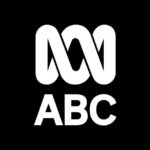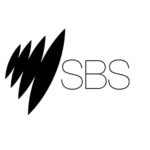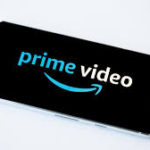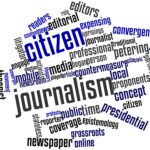Busy? On the road? Prefer listening to reading? Tune into the podcast edition! Twitter is …
BUSY? ON THE ROAD? PREFER LISTENING TO READING? TUNE INTO THE PODCAST EDITION!
Public broadcasters in Australia are facing numerous challenges as they strive to remain viable in the face of unprecedented technological and market changes (Wilding, D., Fray, P., Molitorisz, S. & McKewon, E. 2018). So, what are these challenges? How can the broadcasters meet these challenges and subsequently create value for the public and their tax dollar?
Who are the public broadcasters in Australia?
The Australian Broadcasting Corporation (ABC) and the Special Broadcasting Service (SBS) are the two-taxpayer funded broadcasters in Australia. They are both examples of a government providing a service for the public good.

Image Credit: ABC logo (ABC, 2019)
The ABC was established in 1932 to broadcast educational, informative and entertaining content (“ABC History | About the ABC”, 2019). The ABC’s most successful rating year was 2008 when seven of its to 10 programs were locally produced (ABC TV Most Successful Ratings Year Ever, 2008). Many Australians’ first taste of television is via the ABC and its range of children’s shows that find favour with parents due to the absence of advertising. The ABC encourages interactivity and has a feature for this purpose dedicated on its website (“Interactives – ABC News” 2019).

Image Credit: SBS logo (SBS, 2008)
The genesis of the SBS is a response to the growing number of non-English speakers entering Australia in the post-World War II immigration boom. It started as two radio stations, 2EA in Sydney and 3EA in Melbourne in 1975, informing the burgeoning ethnic community of the changes to the Whitlam governments Medibank initiatives, before becoming a television channel in 1979 (“A brief history of SBS”, 2019). In 2019, an SBS original drama ‘The Hunting’, became its most successful Australian drama, reaching 1.7 million viewers in August and has since broadcast in six countries (“The Hunting’ becomes SBS’s most successful home-grown drama”, 2019). ‘The Hunting’ provides evidence to suggest the SBS is capable of creating original content that can become a global export, thus is an essential aspect of Australia’s creative industries.
Why is public broadcasting important?
In 2018 ABC Chairman Justin Milne warned that a failure to invest in the ABC’s digital strategy would threaten its existence (Koziol, 2018). As an aspiring professional journalist, I believe that public broadcasting is a public good. I am concerned that public broadcasters are not prepared for the evolving consumer demand for a product and are caught up in left-wing groupthink.

Image Credit: Amazon Prime logo (CNET, 2019)
Amazon is projected to spend $2.6 billion in 2021 creating original content (Blackburn, Eisenach & Soria, 2019), via its Prime brand. Disney+ achieved 10 million subscribers within 24 hours of its launch in the United States alone (Duke, 2019), and it is now available in Australia. These platforms provide Australians with plenty of entertainment choice.
Public broadcasters, particularly the ABC, have long faced criticism they are biased toward left-wing political ideologies (McIlroy, 2019), and the evidence supporting such a claim is substantial. Employees at the ABC are five times as likely to support left-wing parties than the rest of the population (Davidson, 2019).
The ABC is paid for by taxpayers of all political persuasions. Therefore, ABC leadership must ensure the political narrative is balanced.
What are the changes affecting public broadcasters in Australia?
Even though polls declare the ABC the most trusted news source in Australia (“ABC most trusted | Facebook most distrusted”, 2018); the ABC News’ Australian viewing audience was between 0.4 to 0.6 per cent for a sample period in 2019 (Dwyer, 2019). An unfortunate result for the ABC, yet it also alludes to the opportunities offered by participatory culture through connected networks and social media platforms through the internet, spawning user-generated content through citizen journalism, which has disrupted news-media newsrooms (Miller – Carpenter, 2019).

Image Credit: Intheskies– Adobe Stock Images (2019).
The advent of the globalisation has bought about a range of entertainment and information services on the internet, primarily foreign-owned subscription (streaming) services such as YouTube, which is impacting ratings and audience engagement for the public broadcasters. Data released by Roy Morgan in February 2019 shows that since Netflix, a Subscription Video on Demand (SVOD) service, officially entered the Australian market in 2015, it has grown exponentially and now has over 11 million users. Overall, subscription and Pay TV has grown to almost 14 million Australian household users in the same period, up 11.8% year on year (“Almost 14 million Australians have Subscription or Pay TV”, 2019).
What are the key challenges facing public broadcasters in Australia?
The broadcasters use a hybrid of digital, online, terrestrial radio and television (TV) to issue content. Therein lies one of the main challenges for the public broadcaster as they face competition from SVOD services, and the adaptation of transmedia storytelling by content creators such as the evolving Marvel franchise. Computer-controlled and multi-sensory technology (Brand, 2019) enable virtuality, offering consumers real-time information available via smartphone-based apps. Other information services will filter through, such as gamification, which helps media companies drive user engagement (Angelovska, 2019).

Image Credit: prima91– Adobe Stock Images. (2019).
Social networking services and web 2.0 make enforcement of Australian laws regarding Intellectual Property complicated due to a lack of standardised agreement of fair use (Martin, 2016). A significant concern is that agencies cannot enforce the same code of regulation on public broadcasters as internet-based services, and this challenges the future of terrestrial free-to-air broadcasting. Commercial models will lose relevance if advertisers shift their advertising budget to internet-based services. The SBS is reliant on 20% of their funding from advertising, and the ABC is not immune to these market forces as it must justify its $1 billion annual taxpayer investment.
Despite significant investments in a taxpayer-funded National Broadband Network (NBN), there remains a Digital Divide between Australians; According to ABS Data, almost 2.6 million Australians do not use the internet (Thomas, Wilson & Park, 2018). As the public broadcasters accelerate the transition to a digital-first policy, there is a strong likelihood they will alienate part of their existing audience who are familiar with watching programs via free-to-air terrestrial television. This paradox highlights the challenge for legislators and leaders within the public broadcasting space to strike a balance between current and future needs.
What does the future look like for the public broadcasters?
Commentators claim the ABC lacks stability due to the coalition governments’ accumulative ABC funding cuts’ (Wake & Ward, 2019). Such accusations ignore the fact that public broadcasters face a more certain future than any other media organisation in the nation (Pascoe, 2018).

Image Credit: MQ-Illustrations – Adobe Stock Images. (2019).
There are calls from prominent media commentator’s Paul Sheehan (2014) and Rita Panahi (2018), suggesting the SBS is no longer relevant and an unnecessary burden on taxpayers. The observation has merit, as technology has allowed immigrants to consume content from just about anywhere through satellite dishes and the internet, and there is no evidence available to suggest that they will be denied access to culturally relevant programming through the absence of the SBS.
Recommendations.
As smartphones empower the consumer to make ever more decisions regarding how they stay informed and receive their entertainment, Australia’s public broadcasters should rationalise into a single corporation.
It is highly recommended the public broadcasters rationalise which will streamline costs and operational procedures to stay viable in the SVOD era. The key recommendations determine that cancelling the SBS and increasing the production footprint of the ABC into more regional areas is a better use of taxpayer funds, in this way it will help the broadcaster remain relevant as it invests in a digital strategy.
Conclusion.
The critical issue rationalising the public broadcasting presence addresses is relevance. A merged public broadcasting presence allows policymakers to focus on content strategy and to engage with as broad an audience as possible. Public broadcasters schedule programming away from the hype that commercial stations need to generate, in this way public broadcasters are shielded from the hype cycle advertisers need commercial programmers to address.

Image Credit: Paul Wear – Adobe Stock Images. (2019).
Public Broadcasters have a significant responsibility to contribute effectively and profoundly to Collective Intelligence. This contribution must be free from political bias and address the proliferation of consumer telepresence through evolving networks and devices.
If you feel like giving me any feedback or want to talk further; you can drop me a line and says hello on Twitter!
REFERENCES
‘The Hunting’ becomes SBS’s most successful home-grown drama. (2019, para 1). Retrieved 26 November 2019, from https://www.sbs.com.au/guide/article/2019/09/27/hunting-becomes-sbss-most-successful-home-grown-drama
A brief history of SBS. (2019, para 1). Retrieved 14 November 2019, from https://www.sbs.com.au/news/a-brief-history-of-sbs
ABC. (2019). ABC logo [Image]. Retrieved from https://www.abc.net.au/news/2018-11-08/abc-logo/10477576
ABC History | About the ABC. (2019, para 2). Retrieved 14 November 2019, from https://about.abc.net.au/abc-history/
ABC most trusted | Facebook most distrusted. (2018, para 2). Retrieved 14 November 2019, from http://www.roymorgan.com/findings/7641-media-net-trust-june-2018-201806260239
ABC TV Most Successful Ratings Year Ever. (2008, para 1). Retrieved from https://about.abc.net.au/press-releases/abc-tv-most-successful-ratings-year-ever/
Almost 14 million Australians have Subscription or Pay TV. (2019, para 1). Retrieved 27 November 2019, from http://www.roymorgan.com/findings/8036-svod-netflix-foxtel-stan-fetch-youtube-amazon-pay-tv-may-2019-201907010501
Angelovska, N. (2019, para 2). Gamification Trends For 2019: Making Room For Game-Elements In Politics. Retrieved 27 November 2019, from https://www.forbes.com/sites/ninaangelovska/2019/01/20/gamification-trends-for-2019-making-room-for-game-elements-in-politics/#715d75372a77
Blackburn, D., Eisenach, J., & Soria, B. (2019). The Impact of Online Video Distribution on the Global Market for Digital Content (p. 24). NERA economic consulting.
Brand, J. (2019, slide 50 of 61). Virtuality and Gamification. Lecture, Bond University.
CNET. (2019). Amazon Prime [Image]. Retrieved from https://www.cnet.com/news/amazon-prime-video-returns-to-apples-app-store-after-mysterious-disappearance/
Davidson, C. (2019, para 5). Not our ABC | The Spectator. Retrieved 14 November 2019, from https://www.spectator.co.uk/2018/06/not-our-abc/
Duke, J. (2019, para 2). All eyes on Disney+ as streaming landscape prepares for shakeup. Retrieved 27 November 2019, from https://www.smh.com.au/business/companies/all-eyes-on-disney-as-streaming-landscape-prepares-for-shakeup-20191117-p53baq.html
Dwyer, T. (2019, para 14). If the ABC is so trustworthy, why isn’t anybody watching it? | The Spectator Australia. Retrieved 26 November 2019, from https://www.spectator.com.au/2019/05/if-the-abc-is-so-trustworthy-why-isnt-anybody-watching-it/
eldarnurkovic- Adobe. (2019). TV Studio live broadcasting.Recording show.TV NEWS program studio with video camera lens and lights.Positioned stage big professional broadcasting camera with headphones [Image]. Retrieved from https://stock.adobe.com/au/
Intheskies- Adobe. (2019). Word cloud for Citizen journalism [Image]. Retrieved from https://stock.adobe.com/au/
Koziol, M. (2018, para 1). Invest in the ABC’s digital future or it will ‘cease to exist’, warns chairman. Retrieved 14 November 2019, from https://www.smh.com.au/politics/federal/invest-in-the-abc-s-digital-future-or-it-will-cease-to-exist-warns-chairman-20180711-p4zqsp.html
MacLeod, K. (2019). Sunday Dub [Mp3].
Martin, P. (2016). Intellectual Property: Copyright rules make us break the law 80 times a day, says Productivity Commission. Retrieved 26 November 2019, from https://www.smh.com.au/politics/federal/intellectual-property-copyright-rules-make-us-break-the-law-80-times-a-day-says-productivity-commission-20161220-gtf6i0.html
McIlroy, T. (2019, para 3). Prime Minister Malcolm Turnbull says the ABC ‘biased to the left’. Retrieved 14 November 2019, from https://www.afr.com/politics/prime-minister-malcolm-turnbull-says-the-abc-biased-to-the-left-20180622-h11qe8
Miller – Carpenter, S. (2019). Citizen Journalism (p. 1). ResearchGate.
MQ-Illustrations- Adobe. (2019). Taxpayer – Finance/Economy [Image]. Retrieved from https://stock.adobe.com/au/
Paul Wear- Adobe. (2019). Marvel logo on the screen smartphone [Image]. Retrieved from https://stock.adobe.com/au/
Panahi, R. (2018). Merging the ABC and SBS makes ‘enormous’ financial sense | Sky News Australia. Retrieved 27 November 2019, from https://www.skynews.com.au/details/_5841327820001
prima91- Adobe. (2019). Marvel logo on the screen smartphone [Image]. Retrieved from https://stock.adobe.com/au/
SBS. (2008). The story behind the new SBS logo [Image]. Retrieved from https://www.sbs.com.au/blogarticle/107829/The-story-behind-the-new-SBS-logo/blog/The-SBS-Brand
Sheehan, P. (2014, para 5). ABC and SBS merger simply makes budgetary sense. Retrieved 27 November 2019, from https://www.smh.com.au/opinion/abc-and-sbs-merger-simply-makes-budgetary-sense-20140202-31uwl.html
Simion, D. (2019). Cartoon Phone Ring [Mp3].
Thomas, J., Wilson, C., & Park, S. (2018, para 4). Australia’s digital divide is not going away. Retrieved 26 November 2019, from https://theconversation.com/australias-digital-divide-is-not-going-away-91834
Wilding, D., Fray, P., Molitorisz, S. & McKewon, E. 2018, The Impact of Digital Platforms on News and Journalistic Content, University of Technology Sydney, NSW.



